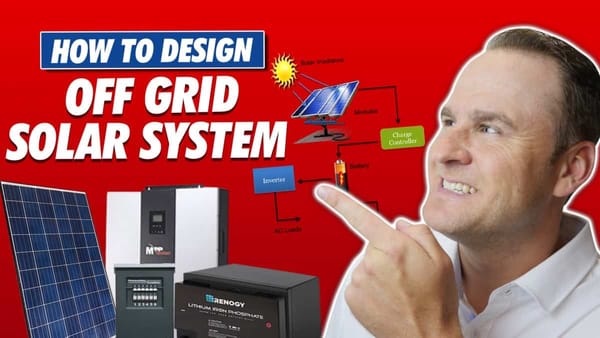Best Solar Charge Controller on the Market
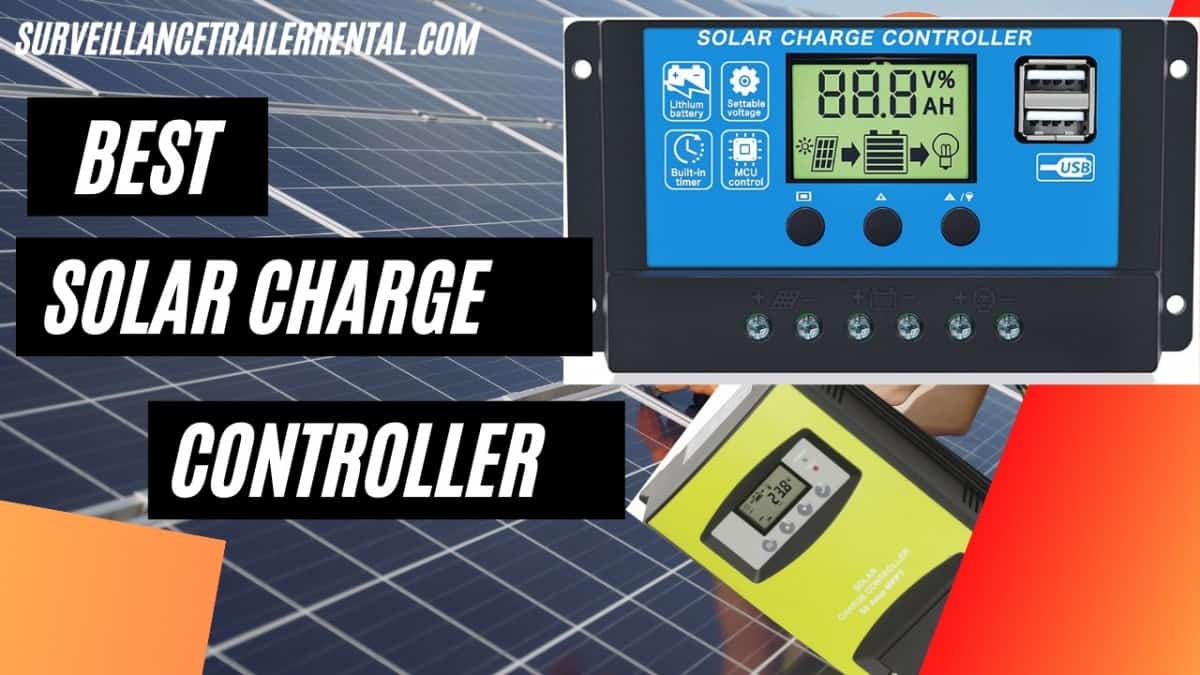
Having the best solar charge controller in your solar or off-grid system ensures that your battery is well charged and does not draw more power than necessary. This will prolong the battery’s life and save you money on your utility bills. Incorrectly charging a battery can cause damage to the battery and even fire. This article reviews the best solar charge controller on the market.
Phoenician Energy 30A Solar Charge Controller
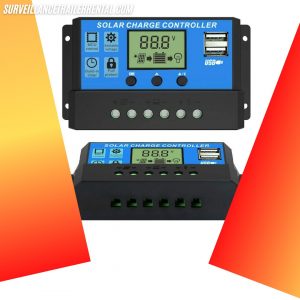
Phoenician Energy 30A Solar Charge Controller
Features
This charge controller is suitable for charging phones and other 5V appliances via USB. It comes with a fully automatic 4-stage battery charging process, adjustable operating modes for loads, and a power rate with USB output.
Phoenician Energy 30A solar charge controller comes with a buffer battery that stores more solar energy. To prevent overcharging, the included 5W power panel includes a regulator. When displaying data, the LCDs show the control status on the Arduino’s IIC port.
The 12V port on the Phoenician Energy 30A solar charger charges the battery. This function prevents damage to 3.2V and 12V lithium battery controllers by using reverse polarity connections. This controller works with batteries that have an input voltage of 20 to 40V DC
The solar regulator is only usable with lead-acid batteries OPEN, AGM, and GEL. It is not suitable for nickel hydride or lithium batteries. The solar controller will automatically turn off if the voltage drops below 8V to prolong the battery’s life.
It is waterproof, dust-proof, and ensures protection against over/discharge, and short circuits. This solar charger protects your equipment against overheating or damage caused by an overload condition. When the overload condition is over, the controller resets itself automatically. This means your system will be unused and protected from excessive current damage while still generating optimal power.
PROS
- It is usable on farms, ranches, and homes as well as in yards and pools.
- You can save money on fuel costs.
- It is safer and more efficient.
- It can extend the battery’s life.
- The Phoenician Solar Controller features low-voltage disconnection.
- It does not generate heat.
CONS
- The instructions are difficult to follow.
Rating
5.0 stars out of 5.0
Binen 30A Solar Charge Controller
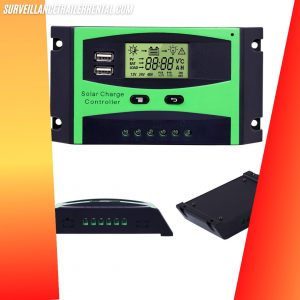
Binen 30A Solar Charge Controller
Features
The Binen 30A Solar Charge Controller is ideal for DIY solar charger projects. It can charge and balance batteries with perfect control.
This solar charger doesn’t require balancing, and it has no battery memory effect. It protects against reverse-polarity connections and battery over/discharge. Additionally, it has a 3-stage PWM charging control circuit that can extend the life of your battery.
The solar charger is designed for use with 12V Solar Power Panels for battery charging. It is equally useful as a DC power supply. This smart charger is a great choice for anyone looking for a solution to charge renewable energy devices.
It prevents unnecessary discharge and damage to your battery caused by incorrect connections or overloading. It comes with an LCD that clearly indicates the status and data of the system.
The Binen 30A solar charger is suitable for home, industrial, commercial, and so on. Other features include the Ambient Temperature Compensation Function, which balances the solar panel with the load to ensure long-term performance; Two-way communication using the LCD and multi-button operation; Full Synchronization of PWM Charge Control, which converts the mains voltage into DC voltage to charge the battery.
PROS
- The compression welding process guarantees a waterproof function.
- You can switch modes and configure parameters easily.
- It features fully 3-stage PWM charging management to improve system efficiency and extend the battery’s life span.
- It can easily replace the use of power banks with its high-performance USB output.
CONS
- It damages batteries.
- Some argue that it won’t reduce the charging current.
- You can’t change the float voltage as much.
Rating
4.5 stars out of 5.0
Renogy Adventurer 30A, 12V/24V Negative Ground Flush Mount Charge Controller
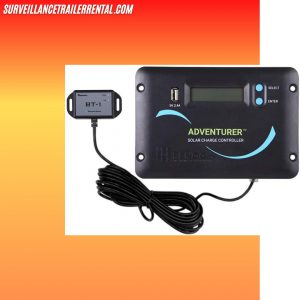
Renogy Adventurer 30A Solar Charge Controller
Features
The Renogy Adventurer is designed to charge batteries in 12 or 24 volt systems. This controller is ideal for small-scale, off-grid buildings, such as RVs, boats, and live-aboard vessels. The controller can handle both 6-Volt and 12-Volt batteries, providing up to 30 Amps of total charging capacity. This waterproof flush-mount design is the easiest way to integrate a controller.
It is compatible with deep cycle sealed, gel, flooded, and Lithium battery options. The push-button and digital display allow for programming without the need for a computer. The professional electric design ensures user safety. It has an auto-detect (3-stage) charge for AGM Lead acid Gel Flooded or Lithium batteries.
The remote ON/Off LED indicator with a status alarm can be heard up to 10 feet away. The Adventurer controller can function as both a solar charger and a battery charger controller.
The Adventurer can work with many types of solar modules and batteries. It simplifies the installation and components, which makes it possible to charge any type of battery safely and securely. However, some users complain that the Renogy Adventurer overcharges certain devices.
For any 12-volt solar system, the Renogy Adventurer 30A charge controller is essential. Its specifications meet the needs of rugged off-grid environments and high-power solar applications. You can increase your battery’s life and safety with multiple features. The smart 4-Stage PWM Charging (Bulk Boost, Float, and Equalization) and temperature compensation increase battery life.
You can also control and monitor your device via Bluetooth. The DC input voltage range is 10-30V, so you can charge 12V batteries anywhere and at any time. There’s no need to worry about power running out on off-grid adventures.
PROS
- The Adventurer makes it easy to install other system components.
- Safe and stable battery charging for all electrical systems.
- For programming with no computer connection, you can use the digital display or push button.
- The professional electric design ensures safety.
- The Adventurer can work with a variety of solar modules, batteries types.
- It simplifies installation.
CONS
- It breaks down quite quickly, so it is a common complaint.
- Installation is difficult.
- It may overcharge some devices.
Rating
4.5 stars out of 5.0
RICH SOLAR 20 Amp 12V/24V DC Input MPPT Solar Charge Controller
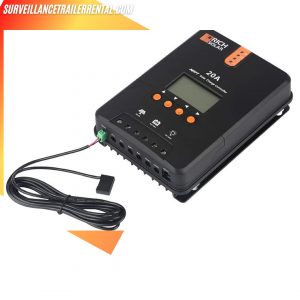
RICH SOLAR 20 Amp Solar Charge Controller
Features
You can control the charge and discharge of deep cycle batteries. You can also use it to balance 24-volt systems. This allows you to use any type of battery that suits your needs: traditional flooded lead-acid, high-performance AGM, or Lithium-Ion.
You can monitor, control and balance your solar power system’s battery bank using the 20A Max. This charge controller has current/voltage ratings of 20A (12V), 15A (24V). It has maximum power point tracking technology, large-scale charging efficiency, and DC input reverse protection. It is more reliable to use because of the large input current and rapid charging speed, and it also turns on float charging when it detects an overcharge.
The RICH solar 20 amp MPPT charge controllers with MPPT technology are up to 30% more efficient than PWM charge regulators. The solar modules are more powerful than traditional solar charge controllers. Other features include customizable charging voltages, temperature monitoring functions, DC Load disconnection protection.
You don’t have to worry about overcharging or discharging because your battery will have a longer lifespan. The smartphone can take photos and videos using Bluetooth via BT-1 Bluetooth Module. These images and videos can then be saved to the Micro SD Card in the controller.
The unit connects up to 20A of solar cells to the battery bank and charges it at night. There is no need to have an additional display or computer. It offers the best nighttime charging option, along with all other charging modes/programs to meet your battery bank charging requirements.
PROS
- You can choose to use any type of battery that you like.
- It allows you to monitor, control, and balance the battery bank of your solar power system.
- There is maximum power point tracking technology with large-scale charging efficiency, low ACR, and DC input reverse protection.
- It is easier to use because of the large input current and rapid charging speed.
Rating
4.0 stars out of 5.0
HQST Solar Charge Controller
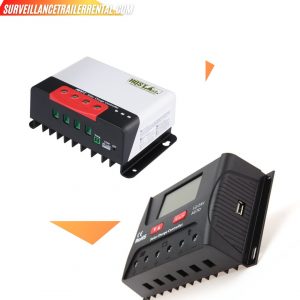
HQST Solar Charge Controller
Features
The battery detection system for this model is automatic for both 12V and 24V batteries. The Battery is safe from damage and discharge, so you don’t have to worry about charging in full-automatic mode.
You can save time and effort from having to check the battery every time you need it. This charge controller will control when the battery needs to be charged and stop it from charging when necessary. This allows you to fully make use of the solar energy in the power system.
This high-quality and high-performance charger is designed for 12V solar panels. The three-stage charging system prevents short circuits, over-discharging, and over-charging. This controller can also be used to connect hundreds or more solar panels simultaneously to increase power output.
The device has several safety indicators, including 1) a DC Voltage Display 2) Short Circuit 3) Overload 4) Output Status, and 5) temperature compensation. The temperature compensation allows for the automatic adjustment of charging parameters.
This controller is intelligent and multifunctional. The serial products are equipped with LCD screens that can be customized to make it easy for users to use the interface. To satisfy the user’s needs, all control parameters can be reset. It is a great fit as it reduces errors in setup and improves accuracy.
PROS
- It saves time and effort.
- The three-stage charging algorithm ensures that there are no short circuits, over-discharging, or over-charging.
- It is possible to connect hundreds or more solar panels simultaneously to increase power output.
- To satisfy the user’s needs, all of the control parameters can be reset.
- It reduces errors in setup and increases accuracy.
CONS
- The user guide is sparsely detailed.
Rating
3.5 stars out of 5.0
Best Value Solar Charge Controller
The Phoenician Energy 30-A Solar Charge Controller is an excellent choice for those looking for a balance between price and performance. The sum of all its parts is greater than its individual parts. Higher efficiency is achieved by connecting the battery first. Although it is possible to connect any device directly with a solar panel, however, it won’t work for very long. You’ll enjoy the best possible conditions for maximum efficiency and for a longer period of time.
Best Quality Solar Charge Controller
It is hard to deny the quality of the Renogy Adventurer 30A, 12V/24V, Negative ground PWM Flush Mount Charge Control Controller. Your battery will last longer with features like temp. The display will show you how efficiently your system works, charges, and communicates with other devices.
Our Pick Solar Controller
The Binen 30A Solar Charge Controller offers many features to protect your battery and prolong the life of your solar system. It is functional and compact. You can configure the display to show how much power you are using.
This charge controller is not like the others, it is a great solar charge controller that will protect your battery against overcharging, reverse polarity, and short circuits. The top-quality components make it last at least one year (probably more).
Solar Charge Controller FAQs
What is a solar charge controller?
A solar charge controller, also known as a charge regulator, is basically a voltage or current regulator that prevents batteries from overcharging. It regulates the current and voltage coming from the solar panel to the battery.
Why is a solar charge controller necessary?
You are busy. A reliable, solid charge controller is essential for your solar system. You need a charge controller that can ensure your system performs at its best even when you aren’t looking.
What are the benefits of using the right solar charge controller?
The right solar charge controller will extend the life of your entire solar system. This will ensure that you get a return on your investment for many years.
What is the link between a battery and a solar charge controller?
A charge controller manages a battery. A solar panel contains a battery similar to the one in your cell phone or smoke detectors. This battery is managed by a solar charge controller.
What is the cost of setting up a solar power system?
The cost of a charge controller is generally 10% of your total off-grid power system costs. Batteries can represent about 40% of your first-time costs and up to 80% of your lifetime expenses. You should consider the reliability and warranty of your charge controller rather than the price.
How do you ensure full charge controller management?
To achieve full charge controller management, you should only use the highest quality products. This will allow you to enjoy benefits such as enhanced safety, durability, and maximum performance.
What size of solar charge controller do I require?
You should ensure that your charge controller is large enough to handle the power and current generated by your panels. Charge controllers are available in a variety of voltage ratings, including 12, 24, 48, and 48 volts. The voltage ratings for charge controllers can range from 6 to 60 volts, and the amp ratings can range between 1 and 60 amps. It is also important to consider the ratings of the battery you plan to use for the system.
What is the difference between PWM and MPPT charge controllers?
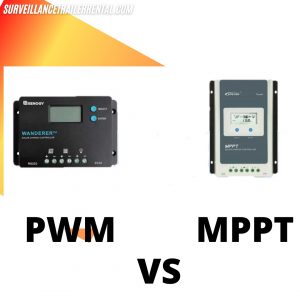
PWM VS MPPT
A PWM controller draws current from the panel just above the voltage of the battery, while an MPPT controller draws the current out at the panel’s “maximum voltage.” (Think of an MPPT control as a “smart DC/DC converter”).
Because they can harvest more energy, MPPT controllers are generally more expensive than PWM controllers. The advantages of MPPT controllers over PWM controllers are not without cost. In warm climates, where the MPPT boost may not be as important, a cheaper PWM controller might be the best choice.
PWM Controller
This controller was specifically made to work with solar-powered batteries. It uses pulse-width modulation to adjust the current flow into a battery according to input from solar cells. This controller is typically smaller and has fewer parts. It is operable with the voltage from the battery. The majority of PWM controllers can be found near or at the battery, but they can also attach to one of the DC wires that runs between the controller and the panels.
MMPT Controller
This controller is also capable of operating with higher voltages and lower array currents. This can lead to fewer strings in parallel or smaller wire sizes due to the less voltage drop. With up to 60 cells, you can expect a maximum power range of up to 30V. This allows for greater flexibility in array selection and allows for a good fit with many batteries.
Wrapping up
A solar charge controller will allow you to take control of your electricity costs. It ensures that all devices in the system work perfectly. It regulates power consumption and ensures that the system is safe and clean. The central communication point for your battery bank is the solar charge controller. It ensures that your system runs faster than ever.


